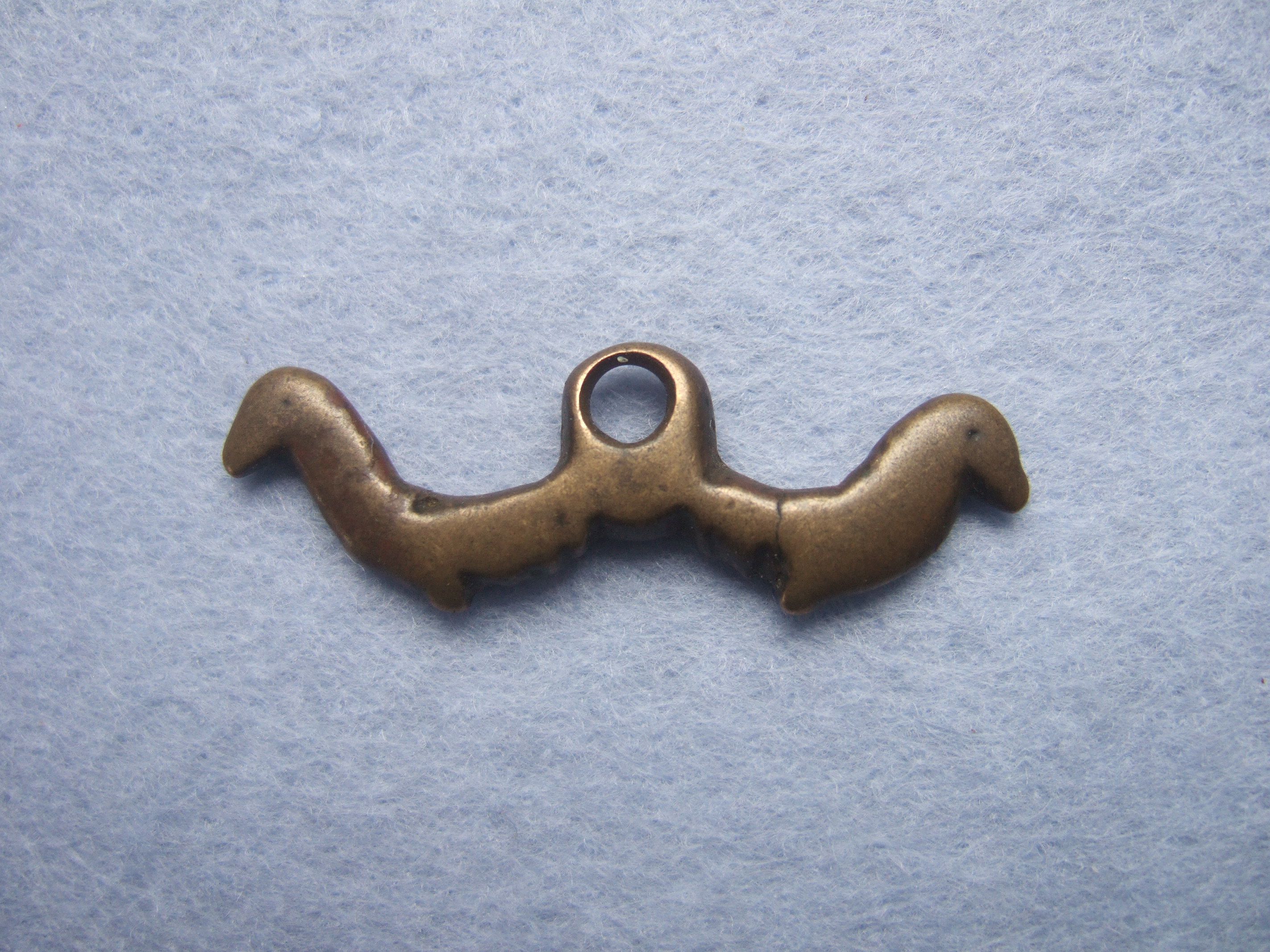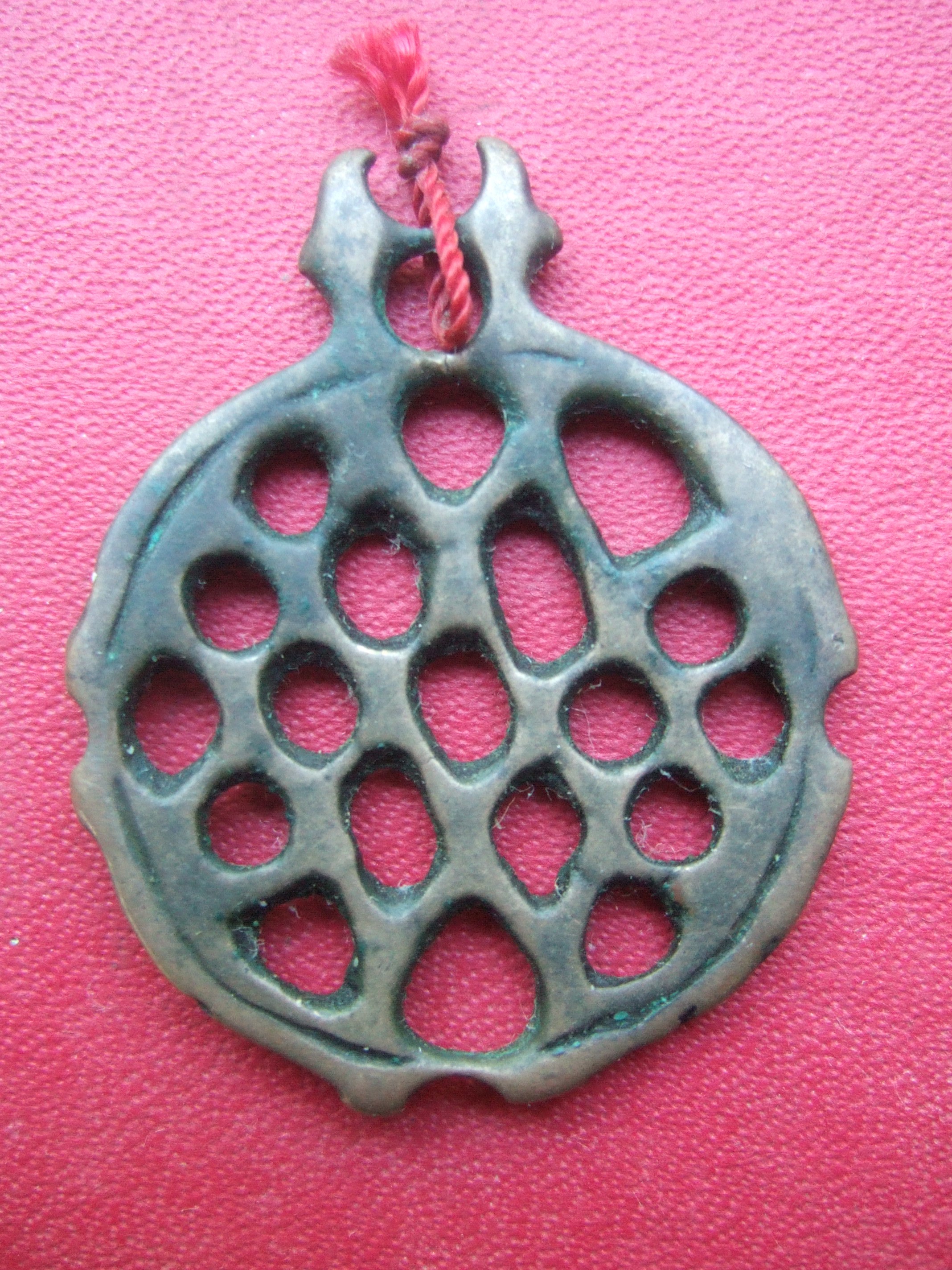Thogcha on:
[Wikipedia]
[Google]
[Amazon]
 ''Thokcha'' (; also alternatively ) are tektites and
''Thokcha'' (; also alternatively ) are tektites and  The use of meteoric iron has been common throughout the
The use of meteoric iron has been common throughout the
(accessed: Thursday April 15, 2010), p.234 Many meteorite fragments can be found in Tibet due to its high altitude and open landscape.

 ''Thokcha'' are metal objects approximately , originally made to function as
''Thokcha'' are metal objects approximately , originally made to function as
Thokcha ~ Tibetan Amulets
* http://www.asianart.com/articles/thogchags/index.html * http://www.asianart.com/articles/vestiges/index.html {{Amulets and Talismans Tibetan culture Meteorites in culture Amulets
meteorites
A meteorite is a solid piece of debris from an object, such as a comet, asteroid, or meteoroid, that originates in outer space and survives its passage through the atmosphere to reach the surface of a planet or moon. When the original object en ...
which serve as amulet
An amulet, also known as a good luck charm or phylactery, is an object believed to confer protection upon its possessor. The word "amulet" comes from the Latin word amuletum, which Pliny's ''Natural History'' describes as "an object that protects ...
s. Typically high in iron
Iron () is a chemical element with symbol Fe (from la, ferrum) and atomic number 26. It is a metal that belongs to the first transition series and group 8 of the periodic table. It is, by mass, the most common element on Earth, right in f ...
content, these are traditionally believed to contain a magical, protective power comparable to Tibetan dzi bead
Dzi bead (Tib. གཟི།; pronounced "zee"; alternative spelling: ''gzi'') is a type of stone bead of uncertain origin worn as part of a necklace and sometimes as a bracelet. In several Central Asian cultures, including that of Tibet, the bead ...
s. Most ''thokcha'' are made of a copper alloy.
 The use of meteoric iron has been common throughout the
The use of meteoric iron has been common throughout the history of ferrous metallurgy
Ferrous metallurgy is the metallurgy of iron and its alloys. The earliest surviving prehistoric iron artifacts, from the 4th millennium BC in Egypt, were made from meteoritic iron-nickel. It is not known when or where the smelting of iron from o ...
. Historically, ''thokcha'' were prized for the metallurgical fabrication
Fabrication may refer to:
* Manufacturing, specifically the crafting of individual parts as a solo product or as part of a larger combined product.
Processes in arts, crafts and manufacturing
*Semiconductor device fabrication, the process used t ...
of weapons, musical instruments, and sacred tools, such as the ''phurba
The ''phurba'' (; alternate transliterations: ''phurpa'', ''phurbu'', ''purbha'', or ''phurpu'') or ''kīla'' (Sanskrit Devanagari: कील; IAST: kīla) is a three-sided peg, stake, knife, or nail-like ritual implement traditionally associate ...
''. ''Thokcha'' are an auspicious addition in the metallurgical fabrication of sacred objects cast from '' panchaloha''.
Writer Robert Beer regards meteoric iron as "the supreme substance for forging the physical representation of the '' vajra'' or other iron weapons." It was believed that these amulets had been tempered by the celestial gods before falling to earth. Beer describes the metal falling from space as a metaphor for "the indivisibility of form and emptiness."Beer, Robert (1999). ''The Encyclopedia of Tibetan Symbols and Motifs'' (Hardcover). Shambhala. , . Source(accessed: Thursday April 15, 2010), p.234 Many meteorite fragments can be found in Tibet due to its high altitude and open landscape.
Age
''Thokcha'' (amulets) are classified into two overlapping periods of origin: the Pre-sectarian Buddhism, pre-Buddhist period (1000 BC900 AD) and the Buddhist period (after 700 AD). Some of the earliest ''thokcha'' can be linked to the Tibetan Zhangzhung culture.Types of Thokcha
horse harness
Horse harness is a device that connects a horse to a vehicle or another type of load.
There are two main categories of horse harness: (1) the "breaststrap" or "breastcollar" design, and (2) the collar and hames design. For light work, such as ho ...
es, buckles, fibulae
The fibula or calf bone is a leg bone on the lateral side of the tibia, to which it is connected above and below. It is the smaller of the two bones and, in proportion to its length, the most slender of all the long bones. Its upper extremity is ...
, and arrow heads
An arrowhead or point is the usually sharpened and hardened tip of an arrow, which contributes a majority of the projectile mass and is responsible for impacting and penetration (weapons), penetrating a target, as well as to fulfill some special ...
. They can also be used as adornments for clothing, lighters and purses.
''Thokcha'' may represent real or mythological
Myth is a folklore genre consisting of narratives that play a fundamental role in a society, such as foundational tales or origin myths. Since "myth" is widely used to imply that a story is not objectively true, the identification of a narrat ...
animals, often deities from Tibet's Bön
''Bon'', also spelled Bön () and also known as Yungdrung Bon (, "eternal Bon"), is a Tibetan culture, Tibetan religious tradition with many similarities to Tibetan Buddhism and also many unique features.Samuel 2012, pp. 220-221. Bon initiall ...
or Buddhist
Buddhism ( , ), also known as Buddha Dharma and Dharmavinaya (), is an Indian religion or philosophical tradition based on teachings attributed to the Buddha. It originated in northern India as a -movement in the 5th century BCE, and ...
religions. However, since several ''thokcha'' are abstract in form, the precise meaning of these pieces remains uncertain.
History
Thogchags or Thokcha (Wylie: Thog lcags) are worn as amulets byTibetans
The Tibetan people (; ) are an East Asian ethnic group native to Tibet. Their current population is estimated to be around 6.7 million. In addition to the majority living in Tibet Autonomous Region of China, significant numbers of Tibetans live ...
, specifically people of the Himalaya
The Himalayas, or Himalaya (; ; ), is a mountain range in Asia, separating the plains of the Indian subcontinent from the Tibetan Plateau. The range has some of the planet's highest peaks, including the very highest, Mount Everest. Over 100 ...
n regions, for spiritual protection and healing. Created in several forms, they often depict tantric deities, sacred animals, auspicious symbols, and mantras. Many represent ritual supports such as a mirror, phurba, or vajra. Some pieces may be abstract in nature, and the meaning of the form has since been lost in antiquity. Further research is still in the process. Other Thokcha were simply used as ancient arrow points, buckles, body armour, or even old horse trappings.
Genuine pieces are believed to be made from a combination of meteorite, iron, bronze, copper, and a number of other metals. A few of the pre-Buddhist
Buddhism ( , ), also known as Buddha Dharma and Dharmavinaya (), is an Indian religion or philosophical tradition based on teachings attributed to the Buddha. It originated in northern India as a -movement in the 5th century BCE, and ...
pieces originate from Persia or Central Asia and some are as ancient as 3,000 years old. The rarest and most sought after thokcha are believed to be made from a meteoric metal known as 'Namchak,' which literally means 'sky iron' or 'sky metal.' Very old pieces can have a distinct ''patina'' and have been worn out into smooth surfaces after centuries of handling. Many ornaments have unique textures which are almost impossible to replicate.
Popular belief
The word ''Thokcha'' is composed of two words; ''thog'' that means ''above'', ''primordial'', ''first'', or ''thunderbolt'', and ''lcags'' that stands for ''iron'' or ''metal'', so the literal meaning of ''thokcha'' is "''original iron''" or "''thunderbolt iron."'' A popular Tibetan belief is that ''thokcha'' are produced magically when a thunderbolt strikes the earth. Historically, it was believed that if one was to find a ''thokcha'' underground by chance, they would work as a good luck charm. A gesture ofsympathetic magic
Sympathetic magic, also known as imitative magic, is a type of magic based on imitation or correspondence.
Similarity and contagion
James George Frazer coined the term "sympathetic magic" in '' The Golden Bough'' (1889); Richard Andree, however ...
portrays that if you cast ''vajras'' from the metal, it would return a piece of the original iron to the site where it was found.
See also
*Glossary of meteoritics
This is a glossary of terms used in meteoritics, the science of meteorites.
#
* 2 Pallas – an asteroid from the asteroid belt and one of the likely parent bodies of the CR meteorites.
* 4 Vesta – second-largest asteroid in the asteroid b ...
* ''Iron Man'', a Tibetan sculpture of Vaiśravaṇa
(Sanskrit: वैश्रवण) or (Pali; , , ja, 毘沙門天, Bishamonten, ko, 비사문천, Bisamuncheon, vi, Đa Văn Thiên Vương), is one of the Four Heavenly Kings, and is considered an important figure in Buddhism.
Names
The n ...
carved from an iron meteorite
* Panchaloha
* Orichalcum
Notes
References
*Anninos, Tony, Tokches – Images of Change in Early Buddhist Tibet, ''Orientations'', October 1998, 29(9): 93. *Anninos, Tony, ''Thokcha: the Ancient Amulets of Tibet'', Thokcha World, The Max Maxwell Collection, San Francisco, 2000. *Bellezza, John Vincent, "Thog lcags", ''The Tibet Journal'', 1994, 19(1): 92–97. *Bellezza, John Vincent, "Thogchags: Talismans of Tibet", ''Arts of Asia'', May–June 1998, 28(3): 44–64. *John, Gudrun, ''Tibetische Amulette aus Himmelseisen - Das Geheimnis der Toktschaks'', VML-Verlag, Raden/Westf., 2006. *Lin, Tung-Kuang, ''Antique Tibetan Thogchags and Seals,'' The Art of Tibet, Taipei, 2003. *Weihreter, Hans, ''Thog-lcags. Geheimnisvolle Amulette Tibets''. PDF-Dokument, Edition Kyung, Augsburg, 2002.External links
Thokcha ~ Tibetan Amulets
* http://www.asianart.com/articles/thogchags/index.html * http://www.asianart.com/articles/vestiges/index.html {{Amulets and Talismans Tibetan culture Meteorites in culture Amulets